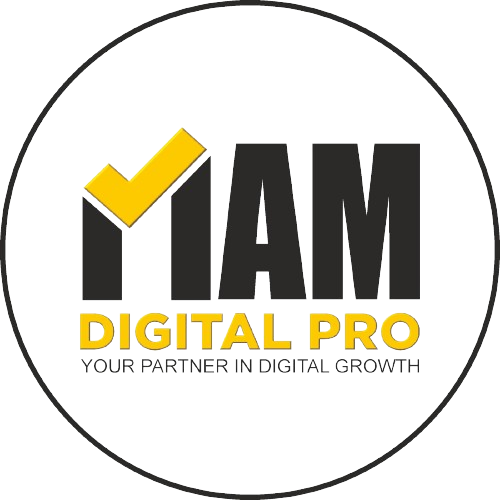Creating captivating social media content is crucial for engaging your audience and seeing success online. But it can be challenging to develop fresh ideas that get results continually. This article will provide 10 content strategies and real-life examples to spark inspiration, help you stand out, and boost your social media game. Let’s dive in!
1. Curated Social Media Content
One effective yet underutilized type of social media content is curated content. Share industry news, articles, videos, and other media from third-party sites that may attract your audience. It provides value by filtering the most relevant and high-quality information for your followers.
For example, if you run a makeup blog, you could share beauty tutorials or product reviews from influencers. B2B brands can curate and share industry thought leadership articles. The key is providing value and commenting on why you are sharing the curated content.
2. Behind The Scenes
Social media users love getting an authentic, behind-the-scenes look at brands. Sharing photos or videos that showcase your products being made, team members at work, company events, and more can help you build connections.
Software company Mailchimp frequently shares fun, casual images of their office dogs, employees, and workplace. It humanizes the brand and makes followers feel like they’re getting an inside look.
3. Spotlight Customers
User-generated content in the form of customer photos, videos, testimonials, and reviews can be highly engaging on social media. It builds trust and social proof for your brand when real customers share their positive experiences.
Outdoor apparel brand Patagonia does this brilliantly by reposting customer photos featuring their products on adventures outdoors. It aligns well with their branding around loving the planet.
4. Ask Questions
Pose interesting questions to your audience to spark dialogue in the comments. Questions should relate to your brand and industry so the conversation provides value. Poll questions work well, too, for quickly surveying followers.
Cosmetics retailer Sephora asks fun questions on their Instagram, like “Which celeb makeup collab are you most excited for?” by asking these questions.
5. Run Contests
Contests, giveaways, and sweepstakes can help you grow your audience and incentivize engagement through likes, shares, and tagging friends. Make the prize relevant to your audience with your products, gift cards, or partner brand prizes.
For example, a gym could offer a free month of classes as a prize. A food brand could give away a year’s supply of their snacks. Get creative!
6. Repurpose Existing Content
Take evergreen content like popular blog posts and repurpose them into engaging social media content—for instance, turn-key points from a blog into a series of educational tweets or LinkedIn posts. Create an infographic based on blog data.
This strategy lets you maximize your best-performing content across platforms. The fitness app Kayla Itsines turned blog fitness guides into Instagram carousels and IGTV video tutorials.
7. Tap into Trends
Stay on top of the latest viral trends, holidays, current events, and pop culture moments to connect your content to what’s popular. Several ways exist, including relevant hashtags, meme formats, and TikTok dance challenges.
For holidays, brands can create content tied to things like Valentine’s Day, Pride Month, Eid, Diwali or Halloween. Just make sure your trendy content still aligns with your brand identity.
8. Try Live Video
Live video is hugely popular on platforms like Instagram and LinkedIn. Broadcasting live Q&As, behind-the-scenes footage, demonstrations, interviews, or announcements can authentically engage your audience.
Outdoors brand REI does Instagram Live episodes where consumers can ask product and hiking questions of their gear experts in real-time. It’s educational and fun for REI’s outdoor-loving audience.
9. Get Visual
With platforms like Instagram and Pinterest, eye-catching visual formats stand out in the feed. Use high-quality photos, graphics, illustrations, or videos to make your content pop.
Infographics, comparison charts, and data visualization graphics can educate your audience visually. The skincare brand Glossier is known for aesthetically pleasing, consistent imagery on Instagram.
10. Share Company News
Don’t forget to share key company announcements and milestones to keep your audience in the loop. It might include new product launches, store openings, team member highlights, awards, certifications, or event recaps.
SaaS company Slack often announces new products and feature updates through its Twitter feed. It helps showcase their innovation to engaged followers.
Conclusion
Implementing a mix of these engaging social media ideas and formats will inspire you to boost your strategy. Always aim to provide value through useful or entertaining content that connects with your target audience. Tap into trends and current events, leverage visuals, and encourage interaction.
Consistent, thoughtful social media content can increase brand awareness, website traffic, conversions, and loyalty. Don’t be afraid to experiment across platforms to see what resonates most with your followers. The key is striking the right balance between your brand’s unique identity and what your audience responds to.
What social media content formats do you find most effective? Comment below and let me know!
FAQs
Q.1 What type of content is best for each platform?
Facebook: Informative articles, behind-the-scenes photos/videos, polls, contests
Instagram: Visual content like photos, graphics, reels/short videos
Twitter: News, trends, real-time updates, engaging tweets
LinkedIn Thought leadership articles, company/industry news, job updates
TikTok: Short videos, viral trends, memes, challenges
Q 2. How do I get ideas for my content?
Listen to your audience and what they respond to
Stay on top of trends in your industry
Repurpose existing content into new formats
Look at competitors for inspiration
Use tools like Buzzsumo to find trending content topics
Monitor hashtags and keywords to see what’s popular
Q 3. How do you create content for all social media platforms?
– Develop one vital piece of content that can be tailored for each platform (e.g., blog post turned into videos and graphics)
– Maintain a content calendar to ideate and plan content across platforms
– Use repurposing to adapt content appropriately for each platform’s strengths
– Create content specifically for each platform’s preferred format (e.g., Twitter threads, Instagram reels)
– Schedule and use social media management tools to distribute content efficiently
Q 4. What are five content ideas to make your content have a lot of engagement on social media?
- Contests – get likes and shares
- Interactive polls and questions
- Trending topics – use relevant hashtags and topics
- User-generated content – showcases customers
- Behind-the-scenes content – give an inside look at your brand
Q 5. How can I create social media content that drives conversions for my business?
The key is creating content that moves users down the marketing funnel. Start with awareness content to introduce your brand and products. Then create middle-funnel content like “how-to” tutorials or case studies to get users to engage further. Finally, use promotional content like discounts or free trials to drive conversions at the bottom of the funnel. Tailor your content strategy to where users are in their buyer’s journey.
Q 6. What tools do you recommend for planning and managing social media content across multiple platforms?
There are a few helpful social media management tools out there. Hootsuite allows you to schedule posts across platforms, engage with audiences, and analyze performance. Buffer has excellent social media scheduling and analytics features. Canva is helpful for quick graphic creation. HubSpot has an all-in-one suite for blogging, social media graphics, analytics, and more. Many tools also allow you to collaborate with team members to plan and publish content efficiently.
Q 7. How often should I post on each social platform to maximize reach and engagement?
While there is no definitive rule, these are general best practices for posting frequency by platform:
– Facebook: 1 post per day
– Instagram: 1-2 posts per day
– Twitter: 3-5 tweets per day
– LinkedIn: 1 daily post
– YouTube: 1 video per week
– TikTok: 2-3 videos per day
The most important thing is monitoring engagement and adjusting your frequency based on what resonates best with your audience on each platform. Maintaining consistency is critical.
Facebook
Twitter
LinkedIn

